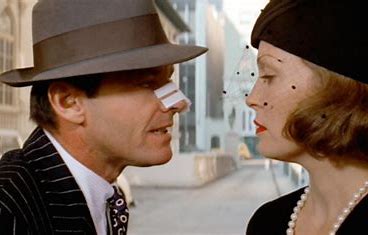Robert Towne based his masterful original screenplay on the William Mulholland – Owens Valley – Los Angeles Aqueduct events of the early teens – the LA Aqueduct was completed in 1913, emptying into the Van Norman Dam in the northern part of San Fernando Valley – and Towne transported those events forward in time to 1937. To a time when the LA on film is recognizable as the LA of the seventies and the LA of today. Roman Polanski, like Hitchcock, was a great director born to work in Hollywood. A genius behind the camera when he was working with the most excellent technicians on the planet as he was here – cinematographer John A. Alonzo lovingly using a palette of yellows and browns in the desert heat, Richard Sylbert’s production design, Anthea Sylbert’s costumes, and Sam O’Steen’s editing – he captured the FEEL of LA better than anyone before or sense. Having experienced some horrific personal tragedies, he gave the film a preordained feeling of doom and melancholy and, in the process, gave us the most fabulous color in film noir.

Jack Nicholson (arguably Hollywood’s most outstanding actor) gives his most memorable performance here as J. J. “Jake” Gittes, a private investigator who gets in way over his head when he starts to investigate the business dealings of water baron Noah Cross (a brilliant John Huston) and may, inadvertently, be responsible for the death of the woman he loves, the film’s femme fatale Evelyn Mulwray, magnificently played by Faye Dunaway.
As if this wasn’t enough, the film is bathed in the notes of the most excellent movie score ever written – Jerry Goldsmith’s haunting trumpet-based masterpiece.
Nominated for 11 Oscars.
A single win for Robert Towne’s original screenplay.
https://thebrownees.net/my-70-all-time-favorite-original-movie-scores/




